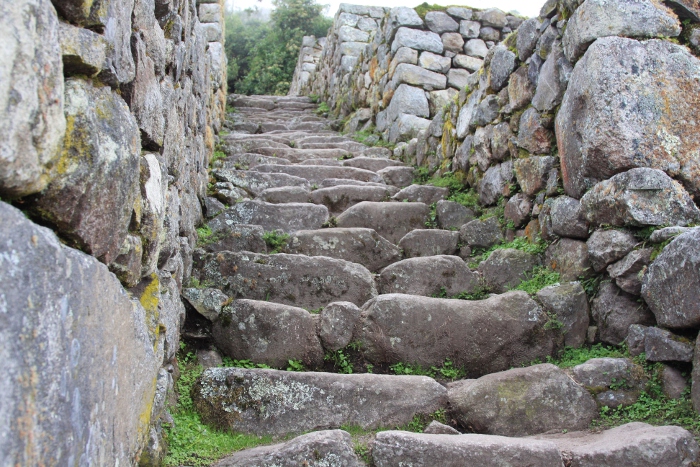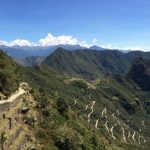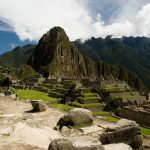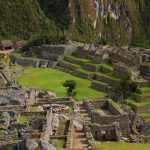The Peruvian Andes are among the world’s top hiking destinations, and completing the Inca Trail to Machu Picchu is one of those once in a lifetime experiences that adventurers dream about for years. The snowy peaks and lush cloud forests of the trail, along with the incredible history of the Inca Empire, the dramatic spectacle of Machu Picchu and the physical and mental challenge of completing the hike, all combine to make a uniquely fulfilling travel experience. We’ve put together an essential Inca Trail Guide, including when to go, what to bring, and how to prepare for the challenge!

♦ How difficult is the Inca Trail?
The Inca Trail is a moderate mountain hike, but high altitude increases the difficulty. However, if you are relatively fit it is definitely manageable. There are of course some very steep sections, and about 30% of the trail consists of steps. To get the most out of your experience it is a good idea to up your fitness levels with some pre-hike training. Building stamina is more important than strength, so regular walking, biking, or swimming in the months leading up to your trip is an ideal way to prepare. It is also good to do some walking while in Cusco or the Sacred Valley to prepare your body for the altitude.
♦ How long is the hike?
The classic Inca Trail is roughly 27 miles (43kms) long and takes four days (3 nights camping) to complete – this includes transportation from Cusco, followed by an afternoon hike to the first camp (4-6hrs), then 2 full days of hiking (7-9 hrs each), followed by an early morning hike to Machu Picchu (2-3hrs). Day 2 of the trek is by far the most difficult as you climb over 1200 meters in one day to the Warmiwanuska pass (Dead Woman’s Pass) then quickly descend to the campsite.
There are also options for shorter and longer hikes, depending on time constraints or fitness levels. The shorter two day Inca Trail, for example, gives you one day of hiking (6-7hrs) followed by a day exploring Machu Picchu, while other treks are more challenging and combine different sections of the trail, or visits to other Inca sites. CAT also offers a wide range of alternative trekking options in the Andes should the Inca trail for some reason not be available – find out more in our Peru Inca Trail hikes section.

♦ What about altitude and heights?
The highest pass (Warmiwanuska) is around 4200m (13,000ft), so altitude is an important factor to consider. It is highly advisable to spend some time acclimatizing before tackling the trail – at least 2-3 days in Cusco is recommended. Give yourself time to acclimatize and eat light meals at the beginning of your time in the mountains. Whilst on the Inca Trail you could also follow the example of the porters and chew on some coca leaves. As well as being a stimulant, coca is considered very effective at relieving altitude sickness. Staying hydrated is also a key, and one should expect to consume 1.5 to 2 liters of water each day.
♦ When to go?
You can hike the Inca Trail at any time of year, though it is generally closed for maintenance during February. The dry season is roughly between May and September, with the most popular time on the trail being June to August – when tickets sell out quickly. October to April is the rainy season when trekking conditions can be a little more difficult. Of course this is not set in stone and it is more than possible to have perfect weather in March and rain in August.

♦ When to book?
The Inca Trail to Machu Picchu is a popular trip and, in order to protect the site, laws have been brought in to limit the number of visitors. Only 500 people are permitted daily, which includes all guides, porters, support staff (cooks, etc) and trekkers. Only around 200-300 tickets are for actual hikers. It is therefore highly advisable to book around 3-4 months in advance to ensure your ideal dates are available, and up to 6 months in advance for June-Aug.
♦ What to pack?
Temperatures vary greatly on the trail and rain and wind is possible. Days can be very warm in the lower areas, whereas nights at high altitude get very chilly. The best course of action is layering. You will also need good boots, something relatively light weight with ankle support is ideal. Be sure to take your boots for a walk before hitting the trail, blisters can definitely spoil things! Here is a list of essentials:
- One set of clothes per day (t-shirt, socks, trousers)
- Small daypack, with sun glasses, sun hat, sun and insect lotion, camera, water etc
- Waterproof pants, water and wind proof jacket
- Micro-fiber fleece or sweater, winter hat and gloves for colder days/nights
- Good walking boots, light sport shoes and flip-flops (for the shower on the last day)
- Water canteen (plastic bottles are prohibited on the Inca Trail)
- Sleeping bag (good quality bags and liners are available for hire)
- Flashlight, batteries, fully charged camera and film if needed
- Original passport
- Personal medication, toiletries and towel
- Peruvian currency in small denominations for tips and small purchases along the way

♦ What about food and equipment?
All of CAT’s treks are fully inclusive. Your group will include porters, guides and chefs, and all tents, sleeping mats, restroom tents, kitchenware, dining tents, tables, chairs, and food will be carried by your porters. The porters will also carry some, or all, of your luggage, depending on your preference, giving you the chance to enjoy the experience unhindered. (The porter will carry approximately 7kilos or 15pounds pp).
The porters are very accustomed to high altitudes and hiking, so much so that every year they hold an Inca Trail race – a recent champion is a 46 year old porter who completed the trail in 3.45 hours!
♦ How do I book?
If our Inca Trail Guide has you pulling up your walking socks and ready to take on the challenge, you can get things started by visiting our Inca Trail Travel Guide, our Inca Trail tour list or by contacting a Peru Travel Specialist for a chat and/or a quote.
Thanks for visiting our Central & South America Travel Blog! Feel free to contact one of our Travel Specialists via email, phone or chat to plan your perfect Peru travel itinerary.





